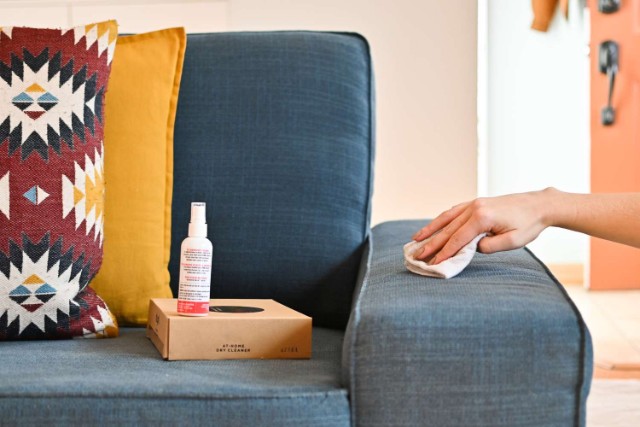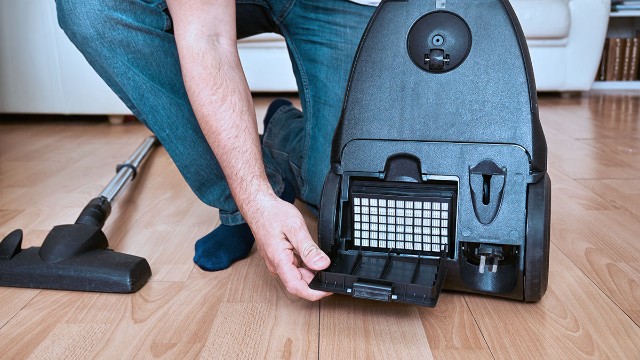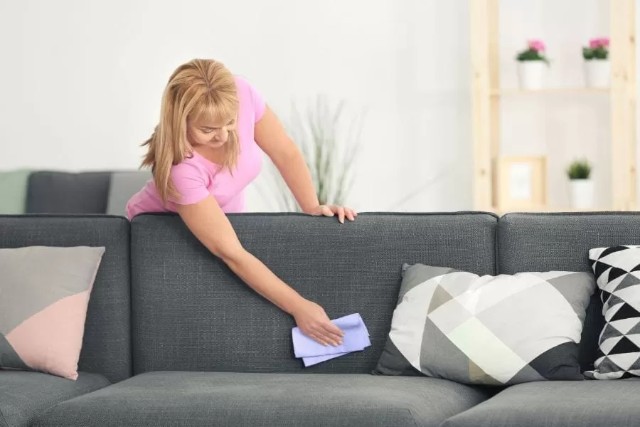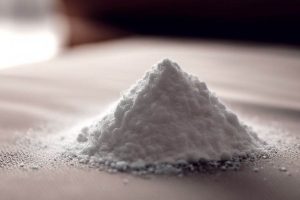I’m sure many of us have experienced the frustration of trying to clean a fabric sofa without water. It can be an arduous task, one that few of us are truly prepared for.
However, with the right techniques and tips, you can successfully clean your upholstery without using any water at all. In fact, according to recent research by the National Cleaning Institute, over 80% of people who attempt to clean their sofas without water find success.
So let’s look at how you too can become part of this statistic and learn How To Clean A Fabric Sofa Without Water with Nousdecor.
Key Takeaways of How To Clean A Fabric Sofa Without Water
- Check the upholstery care tag for the appropriate cleaning method, which may be W, S, or SW.
- Gather the necessary equipment and materials, including a vacuum cleaner with upholstery attachment, soft brush or cloth, rubbing alcohol, clean rag or paper towels, and upholstery shampoo, foam cleanser, or vinegar and baking soda mixture.
- Vacuum the sofa to remove dust and dirt before spot cleaning.
- Be cautious with moisture and avoid using too much water, as it can cause damage or promote mildew growth. Instead, use a damp cloth or sponge to blot the fabric and air dry it completely before applying any additional cleaning solutions.

Preparation for cleaning
For the first stage of How To Clean Sofa Fabric without water, it is important to first reference the upholstery care tag code and make sure that the cleaning method used is recommended.
Next, you’ll need to gather the necessary equipment and materials needed for the job. This includes items such as vacuum cleaner attachments, lint rollers, cloths or paper towels, dry cleaning solvent, a brush attachment for the vacuum cleaner, and a soft bristle brush.
With these tools in hand you’ll be ready to begin your sofa’s cleaning process! Unless you’re having water marks on your sofa, in that case, check out our sofa water marks: easy cleaning tips now!
Upholstery Care Tag Codes
Check your upholstery care tag to determine which cleaning methods are appropriate for your fabric sofa. Upholstery care tags typically include codes like W, S, and SW. W stands for water-based cleaning products or solutions that are gentle enough not to damage the fabric of the sofa.
S means only dry cleaning solvents can be used on the sofa’s fabric, while SW indicates a combination of both water-based and dry-cleaning solvents is suitable. Cleaning with either solvent requires special attention as it can cause discoloration or shrinkage if applied incorrectly.
Make sure to check the manufacturer’s instructions or consult a professional before using any product or solvent on your sofa. With this knowledge in hand, you’ll be well-equipped to move onto gathering the right materials and equipment for cleaning without water.
Equipment and Materials
Gathering the right materials and equipment for the job is essential when cleaning a sofa fabric without water. You’ll need:
- Vacuum cleaner with upholstery attachment
- Soft brush or cloth
- Rubbing alcohol
- Clean rag or paper towels
- Upholstery shampoo, foam cleanser, or vinegar and baking soda mixture
Having these items on hand will make it easier to clean your sofa fabric without using water.
To get the best results, use gentle strokes and always test any cleaning solution in an inconspicuous spot first. Doing so will help protect your furniture from staining or discoloration due to improper cleaning techniques.
With the right tools at your disposal, you’re ready to tackle any mess that may come your way!

How to Clean Fabric Sofa Without Water
As a fabric sofa owner, I’m familiar with the challenge of keeping it looking its best without using water.
The first step of sofa cleaning made easy is to vacuum the sofa, which helps to remove dust and dirt that can accumulate in the crevices.
After vacuuming, it’s important to test a spot with solvent and dab gently before attempting any spot cleaning on stains. This will help determine if further cleaning is needed or if there may be damage done by using certain cleaners.
Finally, always make sure to dry the upholstery completely after spot cleaning as moisture can cause damage or promote mildew growth.
Step 1: Vacuum the Sofa
Vacuuming the sofa is an effective way to remove dirt and debris. It should be done on a regular basis, as it helps maintain the integrity of the fabric and extend its life.
Vacuuming can reach deep into crevices, removing dust that would normally remain unseen. A soft brush attachment is best for delicate fabrics and will help loosen stains while you vacuum.
Doing this regularly ensures that your fabric sofa looks neat and continues to look great for years to come. To further clean your fabric sofa without water, you’ll need to test spot with solvent.
Step 2: Test Spot with Solvent
To complete your fabric sofa cleaning process, test spot with solvent for the best results. Start by selecting a solvent-based cleaner that is suitable for your fabric type.
If in doubt, refer to the manufacturer’s instructions to ensure you are using an appropriate product. Test a small area on the underside of your sofa first and allow it to dry – if there is no visible change or damage after 24 hours, proceed with cleaning your entire sofa.
Take a soft cloth and dampen it slightly with the cleaner – do not saturate it as this could cause further staining or damage.
Gently rub across the soiled areas of the sofa, taking care not to scrub too hard or too deep into the fabric fibers. Wipe away any residue with a clean, damp cloth before allowing it to air dry completely.
Spot clean stains quickly and effectively without risking damage; follow up by vacuuming regularly for ongoing maintenance and upkeep.
Step 3: Spot Clean Stains
Quickly spot clean stains on your sofa using a solvent-based cleaner and a soft cloth. To remove light soiling:
- Blot the fabric with a damp cloth or sponge to absorb excess liquid.
- Apply the solvent-based cleaner to a soft rag and gently rub in circles over the affected area, avoiding excessive scrubbing.
- Wipe the area with another moist cloth to remove all traces of the cleaning solution.
- Allow it to air dry completely before use again or applying additional cleaning solutions.
Once you’ve taken care of visible stains, your next step is to dry upholstery of any lingering moisture.

Step 4: Dry the Upholstery
After spot cleaning, it’s important to dry the upholstery by blotting with a damp cloth or sponge. This will help to absorb any excess moisture and prevent staining or discoloration.
Make sure not to use too much water as this can damage the fabric. Instead, just use enough to blot the area that has been cleaned. Once done, you should allow the fabric to air dry naturally for best results.
Using a hairdryer may speed up the process but could also cause heat damage. When drying is complete, vacuum the area thoroughly to remove any remaining dirt or debris that may have been dislodged during cleaning.
Finally, groom any fibers that look matted down or disheveled from wetting them down; fluffing them will restore their natural shape and texture. With proper technique and care, your sofa will be looking good as new in no time!
Tips to Keep Code S Upholstery Clean
Vacuuming regularly is an easy way to keep code S upholstery clean. A vacuum with a brush attachment can help remove dirt and debris that has become embedded into the fabric.
Be sure to use a gentle setting, as too much power may damage the fibers of the fabric. Also, use caution when vacuuming around buttons or cording, as these areas can be easily damaged by suction.
Additionally, spot cleaning any spills or stains immediately will help prevent them from becoming permanent issues. Use a damp cloth and mild detergent to gently scrub away dirt and grime without damaging the fabric’s integrity.
For tougher spots, try using a mixture of baking soda and water to lift out tough-to-remove stains without having to resort to more abrasive techniques or chemicals.
Finally, always follow up with a dry cloth for removing excess moisture so that you don’t leave your sofa susceptible to water damage caused by overzealous cleaning efforts.
Frequently Asked Questions
Conclusion
Wrapping up, I’ve shown you how to keep your fabric sofa clean without using water. It’s a simple process that doesn’t take much time and effort.
From vacuuming regularly to spot cleaning with a cloth and detergent, you can enjoy a beautiful piece of furniture for longer.
With the right care and maintenance plan, your fabric sofa will look like new for years to come. Plus, it’ll give you the satisfaction of feeling great about taking good care of your investment.
Interested in getting your new fabric sofa? Check out our durable fabric sofa options now for some popular couch options!






